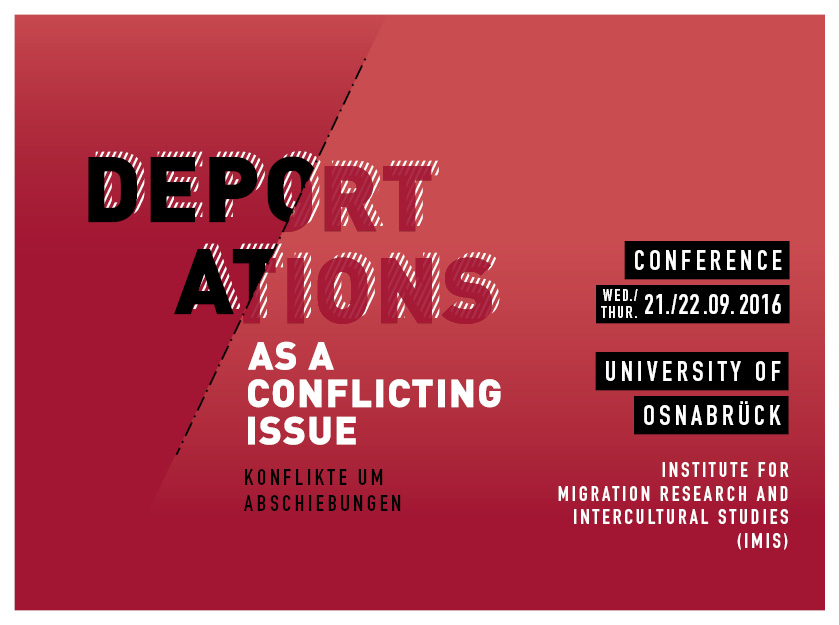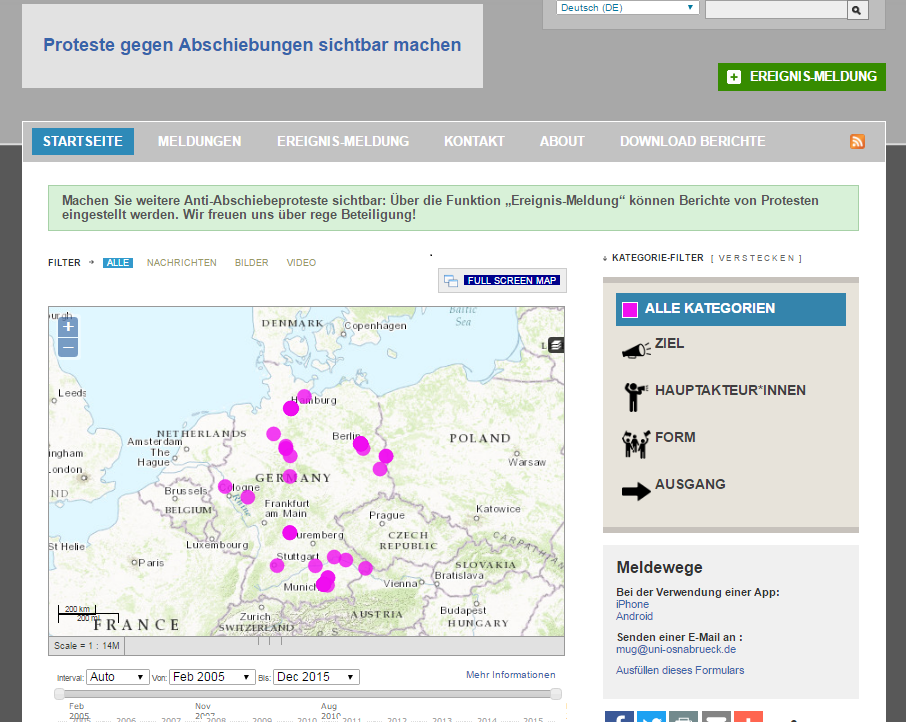Main content
Top content
Taking Sides: Protest Against the Deportation of Asylum Seekers in Austria, Germany and Switzerland (D-A-CH project)

Conference:
Deportations as a Conflicting Issue
Osnabrück, 21/22 September 2016
Taking Sides is a collaborative project between researchers at the universities of Vienna, Neuchâtel and Osnabrück.
Universität Wien
Project leader: Sieglinde Rosenberger
Researchers: Verena Stern, Nina Merhaut
Université de Neuchâtel
Project leader: Gianni d'Amato
Researcher: Didier Ruedin, Dina Bader, Nicole Wichmann
Universität Osnabrück
Project leader: Helen Schwenken
Researchers: Maren Kirchhoff, David Lorenz
Funding of the German project: Deutsche Forschungsgemeinschaft (DFG), 12/2013-11/2016 (D-A-CH funding scheme)
The project explores protest against the deportation of rejected asylum seekers in Austria, Switzerland and Germany. Deportation has become a central element of immigration control, particularly of asylum seekers whose application has been rejected. At the same time, it can be seen as contradicting the intention of human rights obligations for individuals in need of protection, which raises normative questions related to justice and universal norms vis-à-vis state sovereignty and policy implementation adopted by lawful means.
This tension is reflected by the fact that certain sections of the population and the public have become sensitive towards the forcible expulsion of non-citizens from the state territory. Such feelings of unease and moral outrage manifest themselves in various forms of protest that are directed against the most coercive measure a sovereign state can take.
The central aim of the project is to explore and explain the goals, form and degree of diverse anti-deportation protest activities across countries and time (1995-2010). In particular, the project seeks to answer the following research questions:
1.What shapes the trajectories of protest against the deportation of asylum seekers and what is characteristic and even distinct about anti-deportation protest?
2. How can we explain variation in the goals, forms, and degree of anti-deportation protest, both across countries and over time?
The project develops an innovative and integrated perspective by combining different theoretical approaches (political opportunity structure approach and resource mobilization perspective) and considering emotional processes into the analysis. Empirically, the study will be based on newspaper articles about deportation, protest material produced by protest groups and interviews with protesters. In methodological terms, the project combines quantitative and qualitative text analysis with a series of in-depth case studies on individual deportation cases that triggered protest.
The project will make an important contribution to the literature on migration and social movements. More specifically, we will assess (a) the role of structural factors vis-à-vis agency and resources and (b) the motivational and strategic functions that emotions play in protest.
Interaktive Karte: Proteste gegen Abschiebungen sichtbar machen
Im Rahmen der deutschen Teilstudie des vergleichenden Forschungsprojektes “Proteste gegen Abschiebungen in Deutschland, Österreich und der Schweiz“ (1993-2013) wurde eine digitale Karte konzipiert, um einige der Proteste gegen Abschiebungen sichtbar zu machen. Basierend auf einer Medienanalyse werden Protestereignisse aus dem Zeitraum 2005 bis 2013 dargestellt: Von Protesten von Schüler_innen gegen die Abschiebung ihrer Schulfreund_in bis zu kollektiven Protesten für Bleiberecht, von Petitionen und Härtefallanträgen bis Hungerstreiks – die kartierten Ereignisse zeigen, wie vielfältig Anti-Abschiebeproteste verlaufen und welch unterschiedliche Akteure mit verschiedenen Aktionsformen beteiligt sind. Darüber hinaus können Nutzer_innen selbst in die Rolle von Kartograph_innen schlüpfen, um die Karte durch Ereignismeldungen stetig zu ergänzen. Dieser interaktive Kartierungsprozess stellt einen Versuch dar, Proteste gegen Abschiebung öffentlich zu thematisieren.



